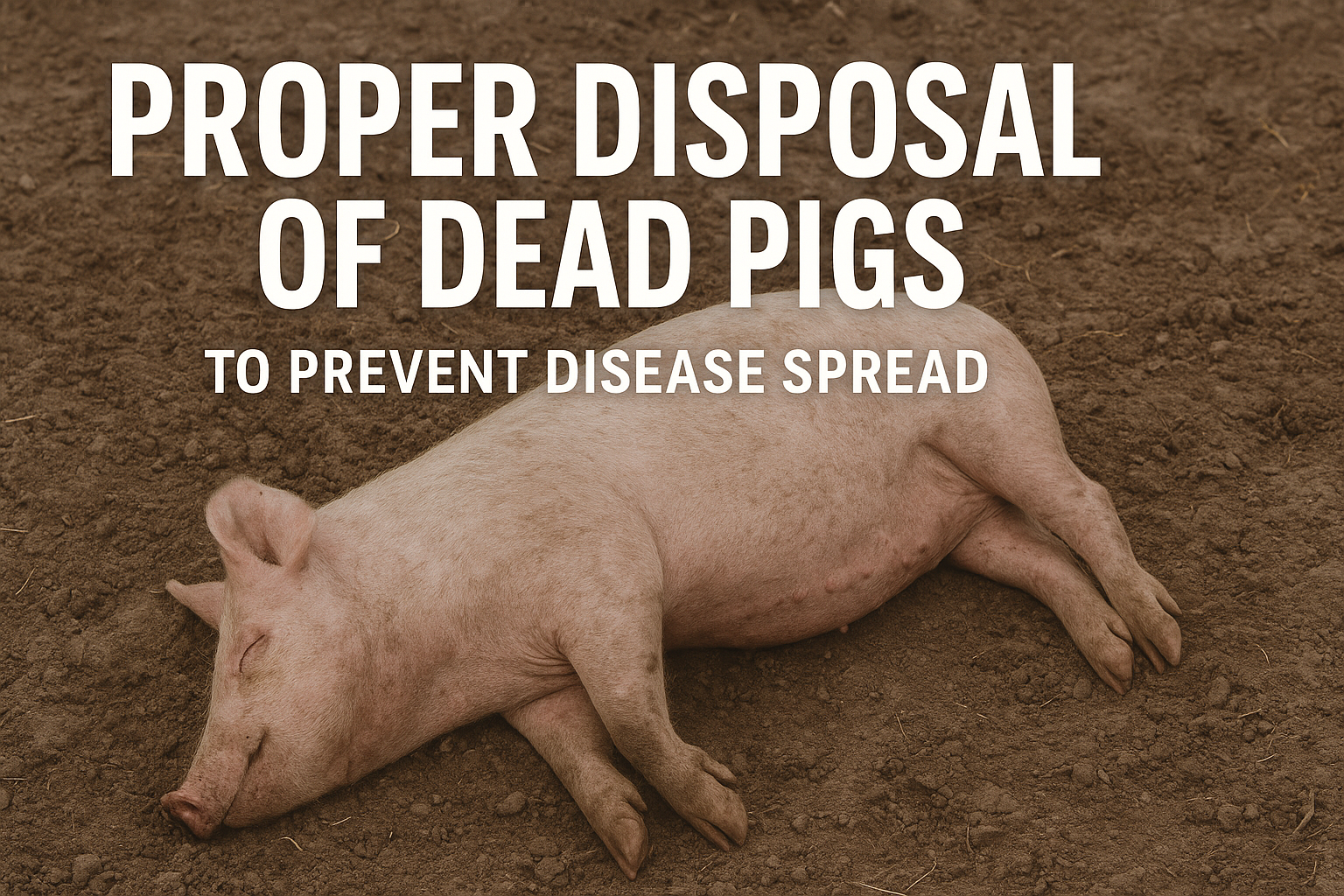Dead pigs on a farm can pose a serious biosecurity risk if not handled correctly. Improper disposal can spread deadly diseases such as African Swine Fever (ASF), Classical Swine Fever (CSF), and other contagious illnesses. Safe and proper carcass disposal is essential to protect your herd, neighboring farms, and the environment.
Why Proper Disposal is Important
- Disease Control – Prevents pathogens from infecting other pigs.
- Environmental Safety – Avoids contamination of soil and water.
- Legal Compliance – Meets government regulations for livestock waste disposal.
Common Risks of Improper Disposal
- Spread of viruses and bacteria to healthy animals
- Attraction of pests such as flies, rodents, and stray dogs
- Contamination of farm equipment and feed
- Foul odors that affect nearby communities
Approved Methods for Safe Disposal
- Deep Burial
- Dig a pit at least 1.5–2 meters deep, away from water sources.
- Place the carcass in the pit and cover it with lime before backfilling with soil.
- Incineration
- Burn carcasses in a high-temperature incinerator or burn pit.
- Ensure complete combustion to destroy all pathogens.
- Composting
- Use sawdust, rice hulls, or straw to cover the carcass.
- Maintain compost pile temperature to ensure pathogen destruction.
- Rendering (Where Available)
- Some facilities can process carcasses into usable by-products under strict safety standards.
Safety Precautions for Farm Workers
- Always wear gloves, boots, and protective clothing when handling dead pigs.
- Disinfect hands, footwear, and equipment after disposal.
- Keep disposal areas away from live pigs and feed storage.
Conclusion
Proper disposal of dead pigs is a critical part of farm biosecurity. By following approved methods, farmers can prevent disease outbreaks, protect the environment, and comply with local regulations. A single mistake in disposal can cost the entire herd—so handle carcasses with care.

